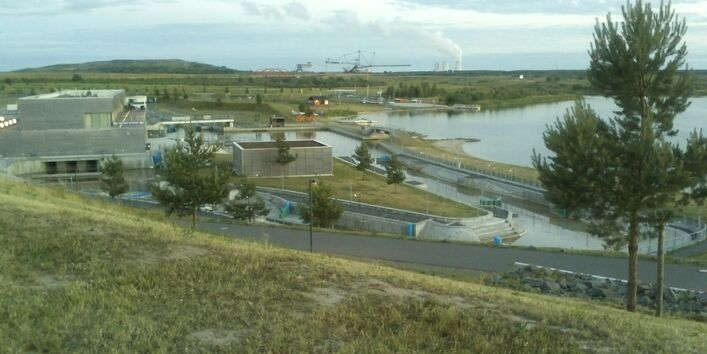Large scale ecological projects
In December of 1992, the federal government and the Treuhandanstalt (THA, Fiduciar Agency) concluded the Verwaltungsabkommen über die Regelung der Finanzierung der ökologischen Altlasten (VA-Altlastenfinanzierung) agreement with the regional states of Berlin, Brandenburg, Mecklenburg-West Pomerania, Saxony, Saxony-Anhalt and Thuringia, concerning joint financing of contaminated-site remediation projects. The goal of the agreement was to eliminate site contamination as an impediment to investment, create jobs, and retain existing jobs.
Under the unification treaty that was concluded with the former East Germany at the time of German unification, the legal basis for contaminated-site remediation and the financing thereof at the federal and regional-states level comprises statutory obligations toward investors pursuant to the site contamination provisions of the various privatization agreements.
On request, the relevant regional-state authorities exempted investors from legal responsibility for the costs attributable to environmental damage that occurred prior to 1 July 1990, pursuant to the Umweltrahmengesetz and Hemmnisbeseitigungsgesetz laws.
The federal government and regional states agreed to undertake 21 large scale ecological projects, based on economic and environmental policy. These projects involved major industrial concerns, potassium mining companies, and shipyards, as well as large industrial regions containing numerous companies.
The technical aspects of the projects were hammered out by project working groups, whose sessions were also attended by BvS representatives, regional-state environmental officials, and UBA representatives. All measures had to be green-lighted by both federal and regional-state authorities.
Between 1993 and 2011, more than €2.6 billion in refinancing was provided for hazard prevention measures, demolition measures and contamination related expenses for large scale ecological projects (75 per cent funded by the federal government, 25 per cent funded by the regional states, after subtracting investor contributions), as well as for so called regular financing (60 per cent funded by the federal government, 40 per cent funded by the regional states, after subtracting investor contributions) (Source: BvS).
The federal government’s goal is to reach an agreement with the regional states concerning cost sharing for hazard prevention measures, and define and contractually stipulate (in conjunction with assignment of responsibility to the regional states) the federal government’s role in the required measures. The regional states of Thuringia, Saxony, Saxony-Anhalt and Mecklenburg-West Pomerania have concluded an agreement with the federal government in this regard and now make all of their own decisions concerning the nature and scope of cleanup measures.
Insofar as fiduciary tasks have not already been assigned to other parties, the BvS contracts out these tasks (apart from those that fall to the authorities). Gesellschaft zur Entwicklung und Sanierung von Altstandorten mbH (GESA) is a wholly owned subsidiary of BvS and carries out site cleanup operations for BvS.








